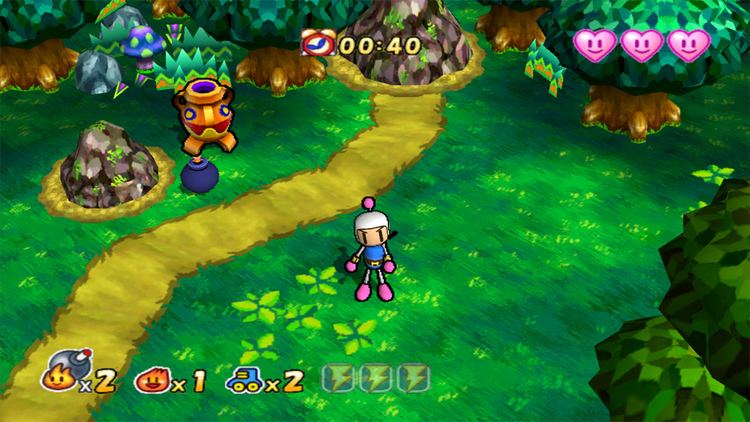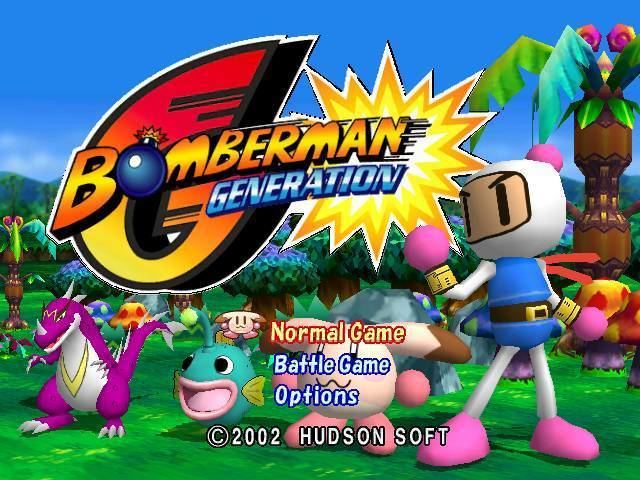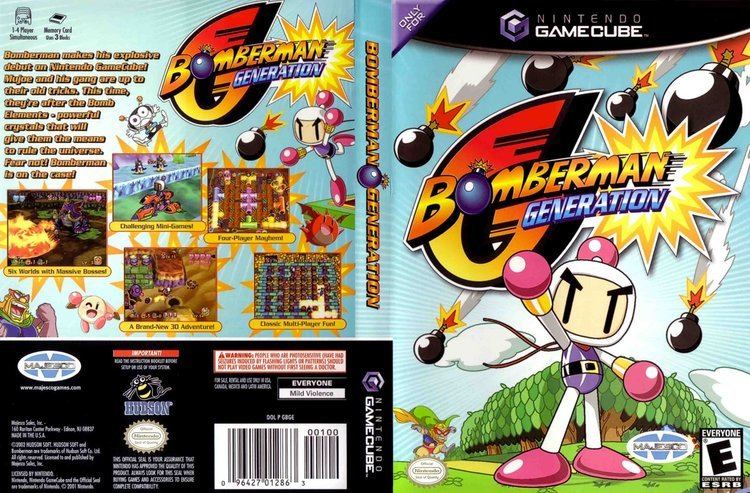8.6 /10 1 Votes8.6
8.1/10 IGN Director(s) Kotaro Hayashida Initial release date 3 June 2002 | 4.8/5 Emuparadise 81% Metacritic Composer(s) Shohei Bando | |||||||||||||||||||||||||||||||||
 | ||||||||||||||||||||||||||||||||||
Producer(s) Hidetoshi EndoYoichi Miyaji Release date(s) NA: June 3, 2002JP: June 27, 2002PAL: December 6, 2002 Mode(s) Single-playermultiplayer Publishers Hudson Soft, Majesco, Vivendi, Vivendi Games Similar Bomberman games, Hudson Soft games, Action-adventure games | ||||||||||||||||||||||||||||||||||
Cgrundertow bomberman generation for nintendo gamecube video game review
Bomberman Generation (ボンバーマンジェネレーション, Bonbāman Jenerēshon) is a 2002 video game released for the Nintendo GameCube. It was later followed up by Bomberman Jetters.
Contents
- Cgrundertow bomberman generation for nintendo gamecube video game review
- Bomberman generation battle mode standard
- Gameplay
- Plot
- Reception
- References

Bomberman generation battle mode standard
Gameplay

Bomberman Generation consists of six worlds consisting of about five levels each. The levels involve puzzles, mini games, Pokémon-like battles using Charaboms who get befriended by Bomberman once defeated, and Charabom or bomb merge areas where a merge item and a bomb get fused or a Charabom and another Charabom get fused resulting in a stronger bomb or Charabom. Pommy (Pomyu) from Bomberman 64: The Second Attack and a few of his variations make appearances as Charaboms. The worlds have unique bosses each with a different strategy of defeating them. All of the worlds have puzzles that the player has to solve with bombs or Charaboms. Bomberman can acquire various power-ups which can increase his speed and his bomb power.

Bomberman Generation was one of the first titles to employ the style of cel-shading for the GameCube, a style utilized again in Bomberman Jetters and The Legend of Zelda: The Wind Waker.

The multiplayer mode resembles that of the classic games in that the players can no longer utilize full three-dimensional movement. The battles can consist of up to four human or computer characters. There are five different modes from which to choose.

Plot

According to the game's opening scene, stories of the origin of the universe's power have circulated for years, but it was not until recently that the source of the power has been found. Six crystals, named the "Bomb Elements," are said to contain unfathomable, though unknown, powers. So Professor Ein sends a space freighter to retrieve them and return to Planet Bomber for analysis.
However, en route to Planet Bomber, the freighter is attacked by a hired gun and is destroyed. The Bomb Elements fall out but are sucked in by the gravitational pull of the nearby planet Tentacalls. Professor Ein receives word that the Hige Hige Bandits, led by Bomberman's arch-enemy Mujoe, are making large scale moves towards Tentacalls, and it turns out that they were the ones responsible for the freighter attack. Not only that, but the Bandits have allied themselves with Bomberman's rivals, the Crush Bombers, who are also on the move to get the Elements for Mujoe.
Professor Ein orders Bomberman to Tentacalls to defeat the Crush Bombers and the Hige Hige Bandits, and to get the Bomb Elements before they do, for if even one element falls into their hands, then the universe would be as Mujoe pleases. Thus begins Bomberman's latest chapter to restore peace and order to the galaxy.
Reception
Bomberman Generation has a positive review ratio of 78% on GameRankings, including such web sites as IGN, GameSpot, and GameSpy, and including magazines such as Electronic Gaming Monthly and Nintendo Power.
